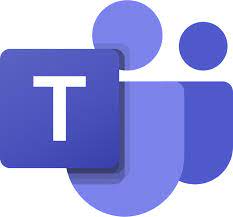By Catherine Nabaloga
The current COVID-19 Pandemic has seen a rise in the need to adopt different technologies by businesses to replace physical meetings and interactions in order to reduce the virus spread in the population while still getting things done remotely. All countries had to go into different phases of lockdown which put a halt to physical human interaction and only those deemed to be essential workers were allowed to move freely.
The disruption in normal operations has created an enormous need for work-from-home tools including different software and gadgets for business continuity. Most organizations and businesses have since adopted different applications that fit their needs in order to manage their teams and continue serving their customers online in the comfort of their homes for example education moved online, banking, meetings and conferences have been held online among others.
Below are the 3 most popular applications that businesses are using to manage their operations;
Zoom
This is currently one of the most popular web conferencing platform. It was founded in 2011 but saw its surge in growth at the beginning of the COVID-19 pandemic. It announced a milestone of 300 million daily meeting participants in April 2020 according to Business Insider. Zoom has been widely used by businesses to host meetings, teach students and keep in touch with friends and family. It has different plans to which individuals or businesses can subscribe depending on their needs.
The four plans include Basic, Pro, Business and Enterprise. Basic plan is the only free subscription which allows free video conferencing of up to 100 participants for a maximum of 40 minutes. The rest of the plans are paid for. The software is available for Windows, iPhone/IPads, Mac OS, Android etc.
Zoom is currently very popular in big organizations and universities because it allows many people to attend these conferences and webinars virtually with up to 10,000 attendants. It allows both video and audio with an option of recording the meeting.
Google Meet
Google Meet (formerly known as Hangouts Meet) is a video-communication service developed by Google. Google Meet is a replacement for Google Hangouts and Google Chat. The service was unveiled as a video conferencing app for up to 30 participants initially, described as an enterprise-friendly version of Hangouts. According to Wikipedia, It launched Meet in 2017 and has launched with a web app, an Android app, and an iOS app.
Businesses and organisations can use Google meet to hold meetings and conferences with up to a maximum of 100 attendees. Participants need to have a paid G Suite account to be able to set up and use Google Meet video conferences. However individuals with a standard Google account can join and be able to participate in a Meet session.
Google Meet has the following plans to which organisations and business can subscribe;
- G Suite Basic costs $6 a month per user and allows up to 25 people.
- G Suite Business costs $12 a month per user and allows meetings of up to 50 people.
- G Suite Enterprise costs $25 a month per user. And allows meetings of 100 people at once.
To join the meeting on Meet, one needs to have a meeting link or a passcode sent to them by the meeting organizer.
Microsoft Teams
According to Wikipedia, Microsoft Teams is a proprietary business communication platform developed by Microsoft, as part of the Microsoft 365 family of products. Teams primarily competes with the similar service Slack, offering workspace chat and videoconferencing, file storage, and application integration.
It offers multiple functions, such as workspace chat, video conferencing, file storage, and application integration. It can allow up to 250 participants on the same call and supports Real-time document collaboration, which allows employees to collaborate, co-author, and edit documents seamlessly at the same time, making teamwork easy and effective.
Microsoft 365 has different options or plans that include; home plan, a business plan, an enterprise plan and an education plan all of which have different pricings depending on the user’s needs.




